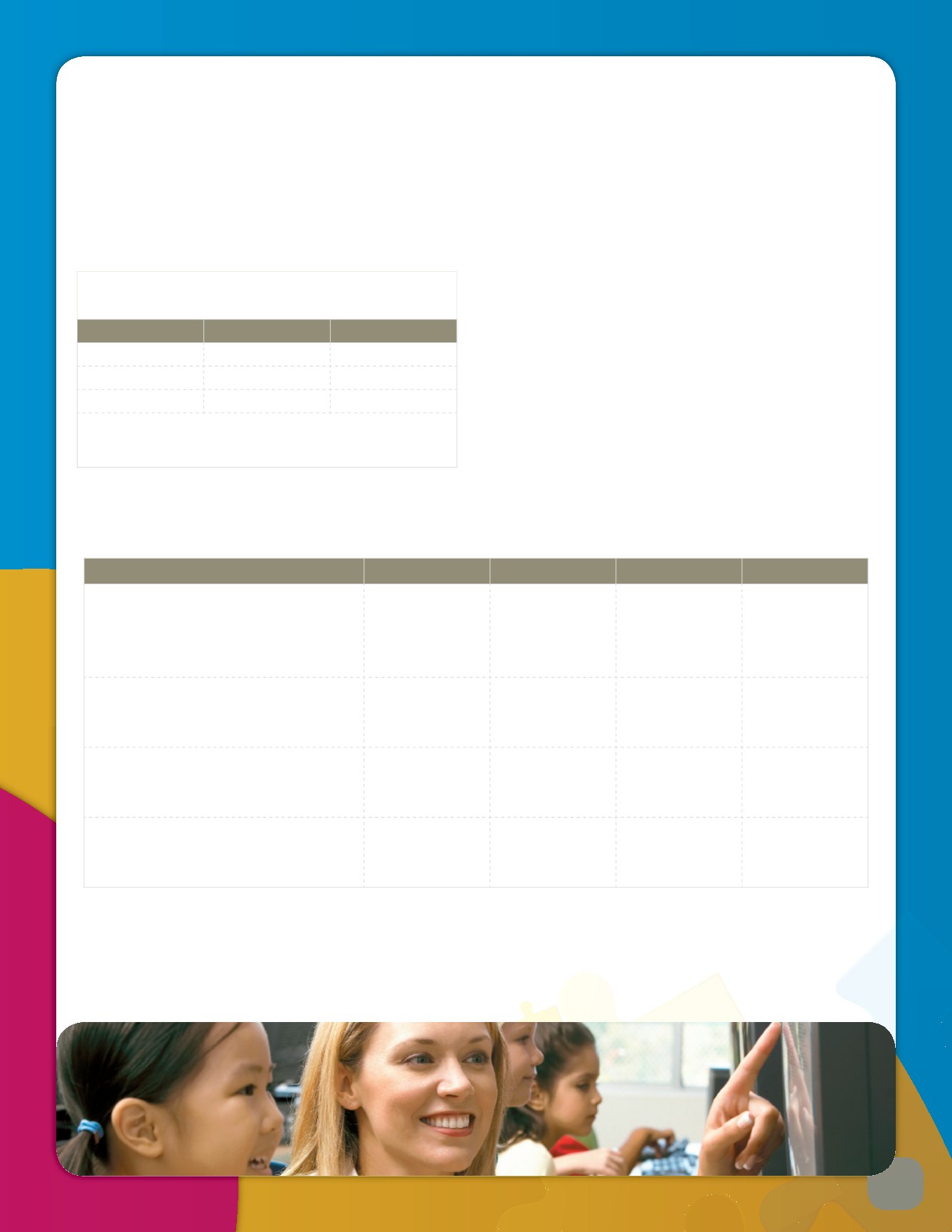
3
The Common Core State Standards clearly state the
proportion of informational and literary text that students
should read over the course of a school day (see Figure
1). It is clear that reading must occur in classes other
than language arts if students are to master all of the
Standards.
Distribution of Literary and Informational Passages by
Grade in the 2009 NAEP Reading Framework
GRADE
LITERARY
INFORMATIONAL
4
50%
50%
4
45%
55%
4
30%
70%
Source: National Assessment Governing Board (2008).
Reading
framework for the 2009 National Assessment of Educational Progress.
Washington, DC: U.S. Government Printing Office.
Figure 1.
Balance of Literary and Informational Texts at Grades 4, 8,
and 12 (National Governors Association Center for Best Practices &
Council of Chief State School Officers, 2010b)
Consequently, teachers in all content areas (including
World Languages/LOTE, English as a Second Language
(ESL), and Language Arts for Native Speakers, or NLA)
will need to be able to select appropriate informational
texts to use with their students. There is a wealth of
informational children’s and young adult literature; the
challenge for teachers will be to select appropriate texts,
which canbe a dauntingprospect when facedwith factors
such as student characteristics and task considerations.
The process can be simplified by applying a rubric based
on the criteria used by the National Council of Teachers
of English (1998-2013). Table 1 presents a sample
rubric to guide practitioners in the selection of quality
informational books.
CRITERION (QUOTED FROM NCTE, 1998-2013)
EXCELLENT
GOOD
FAIR
POOR
Accuracy
— facts current and complete, balance
of fact and theory, varying point of view,
stereotypes avoided, author’s qualifications
adequate, appropriate scope, authenticity of
detail
All indicators
present
Misses one or two
indicators
Facts must be
current and
complete
Misses three
indicators
Facts must be
current and
complete
Misses four
indicators
Contains factual
errors
Organization
— logical development, clear
sequence, interrelationships indicated, patterns
provided (general-to-specific, simple-to-complex,
etc.)
All indicators
present
May not provide
patterns, but they
can be inferred from
text
Lacks interrela-
tionships and
patterns
Lacks logical
development
Design
— attractive, readable, illustrations
complement text, placement of illustrative
material appropriate and complementary,
appropriate media, format, type
All indicators
present
Illustrative material
may at times be
confusing
Illustrative material
and format causes
confusion
Design is text-dense;
illustrations and
format confuse the
reader
Style
— writing is interesting, stimulating, reveals
author’s enthusiasm for subject; curiosity and
wonder encouraged, appropriate terminology,
rich language
All indicators
present
All indicators
present
Style is technical
and somewhat dry
Text has errors in
terminology
Table 1.
Sample Rubric for Selecting Informational Text (after NCTE, 2013)
The informational series,
El Abecé Visual,
consists of informational texts that can be used in Spanish instructional
settings. The excerpt
¿Cómo se produce un terremoto?
(Figure 2) is an example of text that meets all of the criteria for
excellence in informational texts.
Bala
nc
in
g
In
fo
rm
a
tio
nal
an
d Li
te
ra
ry
T
ex
ts


